Kansas State
1951-85 Wildcats KSXKSU5156
(Authentic Reproduction)
The Kansas State Wildcat football history was already mired in mediocrity long before the well publicized losing streak and dreadful records of the 1980's. Earning only sixteen victories between 1940 and 1952 very much established Manhattan, Kansas as a tough place to win. Heading into 1948, six different head coaches and twenty-eight consecutive losses almost served as a template for the future of K-State football. If one marks the beginning of the modern football era at the end of World War II, being held scoreless in twenty-two games between 1945 and 1952 firmly established Kansas State as everyone's favorite homecoming team. As Ralph Graham was completing a very undistinguished three year coaching stint in 1950, most of the Big Seven teams were changing to the Riddell suspension helmet but few K-State players had made that switch. A more important precedent set by Head Coach Ralph Graham was made in 1949 when he allowed center Harold Robinson to join the team and then offered him an athletic scholarship. Mr. Robinson, who passed away May 9, 2006 was the first African-American athlete in the Big Seven conference, the first to be granted an athletic scholarship, and the first to be named All Conference. Despite the poor record of the team, the Wildcat players excelled in another way as they stood by Robinson and as he later stated, "they protected me." When Bill Meek took the reins in '51, he introduced the Riddell RT plastic helmet, a white shell with one-inch purple center stripe that was maintained until the conclusion of the 1956 season. One-inch gold with black trim "vintage Riddell Catalog" numbers, often referred to as "Eagle numbers" as the NFL's Philadelphia Eagles were among the first to wear these, were placed on the rear of the helmets so that the players could identify their helmets quickly and easily. Meek's first two seasons were reflections of typical K-State years, posting 1-7-1 and 1-9 records but in 1953 forward progress was noted with a 6-3-1 second-place conference finish behind the heroics of Wildcat great Veryl Switzer. Switzer, a do-it-all back, led the country in punt returns and as the second African-American scholarship player at K-State, led the way in demonstrating tolerance and patience in a climate of racial bias. A class act and two-year All American in 1952 and '53, Switzer later played in the NFL and CFL. Meek's teams peaked in 1954 at 7-3 with what would remain a Wildcat high water mark for over thirty-five years and had a chance at an Orange Bowl berth until losing to Colorado in the season finale. Guard Ron Marciniak was the plowhorse and squeezed in a one-year pro career with the Redskins before excelling with Toronto in the CFL and later having a distinguished coaching career. A ten-year scout for Tom Landry and the Cowboys, Marciniak is still a top evaluator of talent for the Baltimore Ravens. Meek left in '55 to take the head job at Houston and Bernard "Bus" Mertes took the winning record and twenty lettermen left to him and promptly and systematically ran the record down from 4-6 in his first season (although the huge 46-0 bombing of KU led to an all-out fan assault on the goal posts) to a 2-8 mark in his final season of 1959. Because Kansas was suffering through a time of crisis under head coach Chuck Mather who was having difficulty translating the success he enjoyed at Massillon (Ohio) H.S. to the college level, K-State was in the catbird's seat in-state but did not take advantage of it. As the 4-6 mark of '55 went to 3-7 in '56, there was little to cheer about. Larned, KS back Gene Keady was an effective runner, making his mark in 1954's second game with 132 yards against Wyoming and continuing that high level of play behind scrappy but largely ineffective lines. By '56 Keady was the Wildcats' top scorer with forty-three points but he chose a path in basketball and became one of the nation's most highly respected collegiate coaches, leading Purdue to over five hundred victories in twenty-five years as their head coach.
1957 Wildcats KSXKSU5757
(Authentic Reproduction)
Coach Bus Mertes continued his skid, posting a 3-6-1 record in 1957. The "Eagle" numbers were removed from the back of the helmet for this season and the white Riddell shell with one-inch purple center stripe had the addition of two-and-a-half inch black numbers placed on the sides of the helmets for better player identification. The Wildcats started off well with a win and a tie in their first four games and took their 2-3-1 record into Norman to play number two ranked Oklahoma. They gave the Sooners a scare in a 13-0 loss and finished the season playing surprisingly well against top-ranked Michigan State in a 27-9 loss that was closer than the score indicated. Captain Ellis Rainsberger always played well and was a two-time All Big Eight pick in 1956 and '57 as well as their top wrestler. He later held the head coaching position at Kansas State in 1975 through '77 and was a long-time assistant in the CFL and USFL, even serving as interim head coach of the Pittsburgh Maulers for part of a season.
1958-63 Wildcats KSXKSU5863
(Authentic Reproduction)
Despite teams that entered each game with a well-deserved reputation for "playing hard", the 3-7 season of 1958 was little better than Mertes' usual entries. He had removed the black numerals that were worn on the sides of the helmets for 1957 only, leaving the white helmet shell with one-inch purple center stripe as a "clean" look that would be maintained until the start of the '64 season. Other than the play of end Joe Vader and a late-season win over Iowa State, the season was undistinguished and Mertes entered 1959 under a great deal of pressure. He felt that recruiting speedy talent from the track team to augment end Vader would move him up in the standings but the 2-8 finish ended his reign. Doug Weaver was named the new coach for 1960, a Michigan State man who had spent the previous season on Dan Devine's Missouri staff. Weaver maintained the white shell with purple one-inch center stripe as he replaced Mertes' Wing-T with a straight T-Formation offense. The numbers posted by '59's leading rusher (245 yards), receiver (23 receptions for 224 yards), and scorer (24 points), returning HB Dale Evans, were such that Weaver knew he had a tough job in front of him. Soph FB Willie Crenshaw looked to have potential but the 1-9 record was a surprise to no one except perhaps the enthusiastic Weaver. With Kansas now a contender for Oklahoma's Big Eight throne, the Wildcat backers were lamenting their inability to move forward. The further development of former St. Louis Soldan H.S. fullback Willie Crenshaw was missed in 1961 as he was suspended for the season due to disciplinary reasons, leaving the offensive numbers anemic. Two 14-point outings were the extent of the K-State fireworks in a 2-8 year that included being shut out four times. 1962 promised more and delivered less, a completely winless 0-10 season complete with six shutouts suffered in the first seven games and a grand total of thirty-nine points scored for the entire season! The offensive highlight was the 102 yards Crenshaw put up against Arizona. In '63 FB Willis (no longer Willie) Crenshaw was the attack and the Wildcats two wins, one in-conference over Iowa State, indicated that the offense was at least awakening. Crenshaw moved back home to the St. Louis Cardinals where he played fullback and returned kickoffs for six years and finished his NFL career with the Broncos.
1964-65 Wildcats KSXKSU6465
(Authentic Reproduction)
When a two-win season buys the head coach time to continue building, the hometown fans know their situation is dire. With five wins in his first four years, perhaps Weaver felt that the addition of three-inch black "Charger-style" or rounded numerals on the sides of the white helmet with one-inch purple center stripe would somehow stimulate a win or two. The Wildcats' 3-7 record was a small step forward but losing FB Willis Crenshaw to the St. Louis Cardinals with little to take his place was a major problem. The team went scoreless for four consecutive games before "exploding" for ten points in a loss to Arizona State. The 3-4 conference record moved them out of the basement for the first time in five years and Bill Matan was an All Conference choice at DE. Unfortunately, 1965 was a return to the dismal efforts of the recent past, another winless 0-10 year where K-State was never in any of the games. 6'4", 260-pound Matan again was the only true star and his play earned him a three-game appearance with the Giants in '66.
1966 Wildcats KSXKSU6666
(Authentic Reproduction)
Hoping to finally reverse Wildcat fortunes, the upbeat Weaver still felt there was a chance for a turnaround despite having but eight victories in his first six seasons. He would not earn more than those eight as '66 was a second consecutive winless season at 0-9-1 and one of three in Coach Weaver's seven years. A helmet change for '66 gave the 'Cats a progressive appearance as the black numerals were removed from the sides of the white shell and a large purple capital "K" with the word "State" beneath it was substituted. Keeping the one-inch center stripe in purple gave the helmet a look that immediately identified it with the school and Weaver added two-and-a-half inch rounded purple identifying numerals in the rear. Soph RB Cornelius Davis had true All Everything potential and LB Danny Lankas was All Big Eight. Davis led the Big Eight in rushing with 1045 yards and end Dave Jones was the number two receiver in the conference. Despite these offensive stars, the Wildcats could post more than one TD in but three games. It was obvious that the .123 winning percentage posted by Weaver would not be enough for him to keep his job but he later proved to be a winning head coach at Southern Illinois and was such a successful AD at Michigan State that the indoor football facility was named for him. Hung in effigy before being released, the always positive Weaver noted that he was "glad it happened in front of the library, I've always emphasized scholarship." After the season, the beginning of "Purple Pride" would begin.
1967-68 Wildcats KSXKSU6768
(Authentic Reproduction)
The hiring of enthusiastic Vince Gibson brought a new era to Wildcat fans and to their credit, they remained as enthusiastic as their new coach. With two consecutive head coaching hires of men who were zealous and exuberant over K-State football, this would have to do until more good players could be brought to the campus. Gibson had the pedigree of having been one of the many assistant coaches from Bill Peterson's early Florida State staffs to later become a head coach. He had become a top assistant at Tennessee before taking the K-State job and perhaps made a bigger mark during subsequent stops at Louisville and Tulane as a head coach but with the 'Cats he instituted "Purple Pride" an expression of Wildcat support. Silver became the helmet's primary color, an allowable decision as royal purple and only purple was the school's official color, opening up any number of "trim" or augmentation possibilities. With a purple one-inch center stripe on the silver shell and two-and-a-half inch "Charger-style" rounded numbers at the rear, Gibson took to the field, recruited well, and began to change the perception of K-State football. His initial game against Colorado State was a 17-7 winning effort but that would be the extent of his on-the-field victories for the '67 season. However, the 1-9 record did not reflect the true progress the Wildcats were making. RB Cornelius Davis became the school's leading career ground-gainer running behind the blocking of Dodge City CC transfer Larry Brown. End Dave Jones emerged as an All Big 8 choice falling but 130 yards short of becoming the all time leading receiver in the conference. Wearing the same headgear in 1968, Gibson's aggressive junior college recruiting began to pay dividends with an improved 4-6 record that included a shocking 12-0 win over Nebraska. After the first four games, new QB Lynn Dickey stepped in and the receiving of Dave Jones allowed Dickey to lead the conference in passing and Jones to go on to a three-year career with the Browns. Larry Brown and Cornelius Davis flip-flopped between fullback and tailback with excellent results and they were assisted by exciting Mack Herron with Brown later winning acclaim with the Redskins under Lombardi and George Allen as a hard-charging All Pro running back. John Stucky, a JC All American noseguard at Hutchinson (KS) CC was a two-time All Big 8 pick and later became one of the best-known and highly respected strength coaches in the nation, at K-State, Arkansas, and Tennessee after two-years of play in Canada.
1969 Wildcats KSXKSU6969
(Authentic Reproduction)
Returning to the field in '69 with silver helmets, a one-inch purple center stripe, the same rear identifying numerals as the previous two seasons, and the addition of a noticeable wildcat head on the sides of the helmet, one with a purple nose and white tongue, Gibson pushed his "Purple Pride" throughout the state. In 1970, he would dress his squad in purple jerseys with a white wildcat head on the sleeves, pushing not only "Purple Pride" but trying to get the entire state to think "Wildcats" and not "Jayhawks" as the in-state rivalry heated up. Behind junior QB Lynn Dickey, 1968's conference passing leader despite not starting the first four games, and 5'6" Mack Herron, the thirty-five returning lettermen gave their coach a high-water 5-5 mark. Moving future Cowboy HB Mike Montgomery from end to fullback helped to control the ball despite Dickey's aerial approach and it seemed that the Wildcats were indeed on their way. With short Mack Herron and 6'5" DE Ron Yankowski at the extremes of size in his JC transfers, Gibson's pipeline to the Kansas and Oklahoma two-year schools was paying off. 1969 was in many ways a breakthrough and what Gibson thought would be a standout year. With Montgomery and Herron behind Dickey, and an improving defense led by DB Clarence Scott, the future NFLer who would enjoy a thirteen-year career with the Browns, the 'Cats rang the scoreboard with thirty-plus points a number of times and this season would include the first win over rival Kansas in fourteen years. A decisive 34-7 victory over Iowa State the next week prepared them for their bout with Oklahoma and improbably, K-State would enter the game ranked at number eighteen. Improbable well describes the finish as in one of the biggest wins in Kansas State history, they spanked the Sooners by a lopsided 59-21 score. This moved them to number twelve in the national rankings but they lost a squeaker to Missouri 41-38 that led to three consecutive season-ending losses. Still, their 5-5 record was making Purple Pride all the rage. Herron left for a three year CFL stint, returning to the Patriots for 1973 and '74 and then splitting his final pro season between the Pats and Falcons.
1970-71 Wildcats KSXKSU7071
(Authentic Reproduction)
1970 promised to be "The Year Of The 'Cats" with more records falling to QB Lynn Dickey and a senior-laden defensive backfield led by Clarence Scott and future collegiate head coach Ron Dickerson. On October 7, 1970, a promising year that began at 2-2 took a tumble when the Big 8 Conference placed K-State on three years probation for recruiting violations that included illegal financial aid, illegal recruiting practices, unethical coaching conduct, and scholastic eligibility issues. The 'Cats however followed the confident Dickey to another win over Oklahoma and defeats of strong conference foes Colorado and Missouri to finish at 6-5, their best record since 1954. Yankowski came up big and went on to play ten years at DE with the Cardinals. Dickey was the 3rd round choice of the Oilers and took his conference total offense record or 5779 yards there for four years before heading to the Packers for another nine. Bill Butler proved to be a worthy successor to Larry Brown with 497 yards rushing and HB Mike Montgomery whose dad Leroy was one of the Wildcats assistant coaches, would move on to a few good years as a versatile performer for the Chargers and Cowboys.
Gibson retained a similar uniform look for both 1970 and 1971, tweaking the helmet so that the silver shell with one-inch purple center stripe now had smaller one-and-a-half inch "NCAA-style" numerals in the rear, and the Wildcat head had a reversal of color and now sported a white nose and purple tongue. With the graduation of Dickey for the '71 season, Gibson reverted to a big back, ball-control offense highlighted by the rushing of future Saints RB Bill Butler, HB Isaac Jackson, and a good offensive line led by future Wildcat assistant coach Marion "Mo" Latimore. Their 5-6 finish however came after Oklahoma extracted payback for their 1970 upset loss in the form of a 75-28 thrashing, and from a furious offensive push that featured the passing of QB Dennis Morrison and a return to a wide-open offense that allowed for three victories in the final five games. This gave them a boost going into the 1972 season.
1972-73 Wildcats KSXKSU7273A
(Authentic Reproduction)
Head Coach Vince Gibson went all out for the purple part of his Purple Pride campaign as the Wildcats took the field in beautiful purple helmets with a purple and white wildcat head on each side. The distinctive cat had a purple nose and white tongue for those who looked closely. With K-State emblazoned across the front and wildcat head on the top of the shoulders of their purple jerseys, Kansas State was ready to do battle. QB Dennis Morrison was back with top receiver Henry Childs, a Georgia native who would later return to the south and star at TE for the Saints for most of his eleven-year NFL career. The rushing responsibilities fell to Don Calhoun who became a solid player in the NFL for nine years, most of it with the Patriots. As the offense bogged down, Gibson turned to soph QB Steve Grogan who proved to be adept at both the pass and the run. The underachieving Wildcats finished '72 with a disappointing 3-8 mark that had Gibson retooling his coaching staff and vowing a return to the "toughness and discipline" that he had first built his program upon. Only the 20-19 win over Kansas brought any consolation to a terrible season. For '73 Gibson installed a Veer-T Option with QB Steve Grogan at the controls and Calhoun and Isaac Jackson as the runners. Still dressed in their purple helmets with purple and white wildcat on the sides the team restored their pride with a 5-6 record that included a season ending upset of Colorado, and a per game offensive average of 321 yards.
1974 Wildcats KSXKSU7474
(Authentic Reproduction)
Continuously optimistic, Vince Gibson approached 1974 with the conviction that his team had re-discovered the sense of purpose and toughness that had marked his first few Wildcat squads and better understood his offense. Providing a psychological boost with new white helmets that were adorned with a one-inch purple center stripe and a wildcat head with a white nose and purple tongue on each side, he maintained the royal purple jerseys and sent the team onto the field of play. QB Steve Grogan was still the big name and would later remain a big name in New England as the gutsy leader of the Patriots for a productive sixteen years, but the big body in the backfield belonged to juco transfer James Couch at 6'2" and 230 pounds. Unfortunately the offensive line never jelled and their 4-7 record was a step back from '73. The defensive manpower could not handle their Big 8 opponents other than a stunning upset once again, of Colorado, with wins against non-conference weak sisters which perhaps made Gibson realize that he had gone as far as he could with K-State. At the conclusion of the season, Gibson bolted for Louisville and former Kansas State star Ellis Rainsberger was named head coach.
1975-77 Wildcats KSXKSU7577
(Authentic Reproduction)
Rainsberger was a former Wildcat All Conference star from 1955 through '57 who was smart enough to be named Academic All American. As former team captain, he had great loyalty to K-State and his toughness was reflected as a former Missouri Valley wrestling champion. An emerging Gary Spani would show the ability that later made him a star with the Chiefs but he had little help other than linebacking mate Carl Pennington. After a difficult 10-0 loss to sixth ranked Texas A&M, the Wildcats dropped eight in a row and did not win a conference game on the way to 3-8. They fought bravely against Nebraska and Oklahoma but were steamrolled due to a lack of talent. Paul Coffman showed flashes at TE and would later star at Green Bay but there was little else. Like many new coaches, Rainsberger changed the uniforms and returned to a silver shell with an attractive stripe arrangement of a one-inch purple center stripe with half-inch white and half-inch purple flanking stripes. Each side of the helmet had a diagonally arranged purple KSU trimmed in white and the headgear was worn with a purple home jersey with the white wildcat head on each sleeve as introduced by Vince Gibson, with white neck and sleeve trim for a purple accentuated look that was better than the available talent. The frustration of 1975 paled when compared to the disasters of 1976 and '77. Rainsberger maintained the uniforms and in both '76 and '77, maintained the same 1-10 record. Three years without a conference win sealed the fate of Rainsberger who left his alma mater to become offensive coordinator for the Winnipeg Blue Bombers of the CFL. The 1976 team had a defensive meltdown yielding an average of forty-five points a game to the Big 8's top five teams. All Conference LB Spani was the only bright spot in this bleak run. A positive sign was the sixty-nine point production in the last three games under the leadership of Wendell Hendrikson, a walk-on, 5'9", 155-pound QB. Despite the linebacking play of Gary Spani who went on to a fine nine-year career with the Chiefs, the team was terrible. Even though wide receiver Charley Green led the conference in receptions and no-relation RB Mack Green rushed for 707 yards, the repeat 1-10 record of '77 no doubt sealed the fate of Coach Rainsberger and if the record didn't, off-the-field problems did. Rainsberger awarded thirteen scholarships over the NCAA limit and then was found to have "falsely identified a player in a junior varsity game" to affect his eligibility. The blatant disregard for the rules brought his ouster and Jim Dickey was brought in to right the ship.
1978 Wildcats KSXKSU7878
(Authentic Reproduction)
The Big 8 Conference had a marvelous run through the 1970's. The '50's had them derisively known as "Oklahoma and the Six Dwarves" as the Big Seven grew into the Big 8 but no one challenged the dominance of the Sooners. In the sixties, Bob Devaney brought Nebraska to the fore and OU had a few down years but the remainder of the conference, other than an occasional exception in Missouri or Colorado, could not come close to battling the Big Two of Nebraska and Oklahoma for the Big 8 crown. In the 1970's the 'Huskers and Sooners maintained a stranglehold on the top two spots, were almost always in the running for the National Championship, and dominated their conference but a succession of conference teams did well outside the boundaries of the Big 8 and there was a lot of top-to-almost-the-bottom strength. Consistently Kansas State was not in the running for anything past elevating their losing status to perhaps something better than a three or four-win season. The entire conference expected to "take a hit" with the introduction of '78's new NCAA-mandated scholarship limits. From a forty-five per year allowance and no limit to the number of football players on scholarship at any time, the new thirty maximum per year and a total award of ninety-five players on scholarship at any time, would predict a dilution of Big 8 talent. K-State could ill afford this and Jim Dickey inherited a team that had gone 2-20 in the two preceding seasons, probation for violating scholarship limits and purposeful misidentification of a player, and a shortened spring practice period due to an assistant coach's illegal supervision of an off-season player workout. Dickey, who had been the defensive coordinator at North Carolina, as most new coaches usually did, introduced a new uniform. The helmet was an unusual shade of light slate gray that had a purple tint to it with a one-inch purple center stripe and half-inch white flanking stripes. On each side, Dickey had an interlocking, diagonally oriented purple KSU with white trim that was well-coordinated with the new wide-meshed jerseys and silver pants with purple and white stripes. The team's improved appearance was marked by an improved brand of football as the Wildcats rose to a 4-7 record with three conference victories. The offense showed a lot of spark but Dickey, despite his defensive background, was saddled with the worst defense vs. scoring in the conference.
1979-81 Wildcats KSXKSU7981
(Authentic Reproduction)
Dickey put the Wildcats on the field for the 1979 season in the same unique shade of light gray with purplish tinted helmets that had the one-inch purple center stripe and the half-inch white flanking stripes. The very nice diagonally oriented purple with white trim KSU logo on each side was "dressed up" with new purple masks. The season however was frustrating and the team regressed to a 3-8 record. The record did not show that the team rose up to play extremely well in losing efforts to powerful Oklahoma and Nebraska and then unfortunately, lost convincingly to the Big 8's weaker teams. The defense finally showed signs of life in its 4-4 alignment where young Vic Koenning had the look of a star at linebacker. Koenning learned well as he later became the head coach at Wyoming and at the time of this writing is the defensive coordinator at Clemson. For the '80 season Coach Dickey put the team in the hands of new QB, Darrell Ray Dickey, his son. With few stars around him, Dickey finished 1980 with the same 3-8 record of '79 but had the ignominious distinction of finishing last in the Big 8 in almost every offensive category. HB L.J. Brown had a few good games but even with Dickey given the green light to heave the ball, the offense just couldn't get it done. The defense was slightly better with the linebacking play of Koenning and Will Cokeley who later kicked around the USFL for three seasons before finishing his playing days as a three-game strike replacement linebacker for the Bills in '87. The unique helmet that the Wildcats displayed was worn through 1981, another losing, 2-9 year but one marked by the distinction of having the entire senior class redshirted. Nationally discussed, Dickey's plan was to redshirt all of the seniors, allow the underclassmen to gain experience, and then bring all of them together for a hard run at a bowl-type of season in '82, combining the new-found experience of the young players with strong senior leadership. The 'Cats scared Oklahoma in what might have been a bigger season highlight than the victories against South Dakota and Iowa State as they stretched the Sooners to their limit before falling 28-21 with 2:36 remaining on the clock.
1982-85 Wildcats KSXKSU8285
(Authentic Reproduction)
Dickey tweaked the helmet design, maintaining the light gray with purple tint shell that had a one-inch white center stripe, a .375-inch gap that showed that unique gray color, and three-quarter-inch purple flanking stripes. The purple with white trimmed "KSU" logo from the previous seasons, an interlocking diagonally oriented design now closely associated with K-State, adorned both sides of the helmet. Dickey's grand experiment of redshirting his entire class of returning senior players for the '81 season did not help much in 1981. The undermanned squad managed a 2-9 mark but the underclassmen received plenty of experience. When '82 began and as it progressed, it resulted in KSU's best season since 1954, a 6-4-1 finish and a bid to the Independence Bowl where they lost to Wisconsin 14-3 in their first bowl berth in eighty-seven years! The overall finish at 6-5-1 was highlighted by garnering the newly instituted Wheat Trophy as KSU defeated Wichita State and, while wearing special gray uniforms, Kansas, the latter in a nationally televised game. The "Samoan" running game of backs Iosefatu Faraimo and Masi Toluao behind the blocking of FB Mike Pierson proved effective when combined with QB Dickey's passing. The 3-8 skid in '83 was not part of the plan but losing the opener to weak-sister Long Beach State should have been a clue for what was to follow. If you're eighth in scoring and seventh in scoring defense in an eight team conference, there are problems. QB Stan Weber sat out a good portion of the season with a knee injury but returned to push the Wildcats to their only conference victory over Oklahoma State and a twenty-seven point per game average in the last four outings. Huge 6'7" DT Les Miller transferred from Fort Hays State and was Big 8 Newcomer Of The Year. The highlights of the 1984 season were a mid-season win against Kansas and the finale's upset 38-6 rout of Colorado. The remainder of the season was another hum-drum affair, 3-7-1 overall with QB Stan Weber at the controls. Weber ran and passed well but offensive inconsistency had soph Randy Williams getting a few starts. Entering 1985 under enormous pressure to succeed, Dickey held on until the conclusion of the second game of the season. Opening with losses to Wichita State and Northern Iowa were too much and he resigned with assistant coach Lee Moon taking over for the remainder of the season. It was another K-State disaster with an upset against Missouri the only bright spot in a 1-10 record. DE Kevin Humphrey won another Big 8 Newcomer Of The Year Award for the Wildcats but the porous defense lacked talent. Offensively, trying to emphasize the passing game resulted in the team being ranked last in Big 8 scoring and rushing and they had the highest interception ratio. Moon was replaced by Stan Parrish at the end of the season but his three-year reign brought a miserable 2-30-1 slate which in the long run of K-State football, was a blessing. In 1989, the 1-10 record of Bill Snyder was but a prelude of a seventeen year KSU career that made them a consistent top fifteen team, Big 8 contender, and bowl participant.

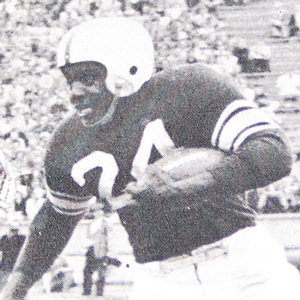
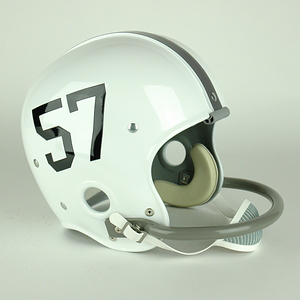

.jpg)
.jpg)
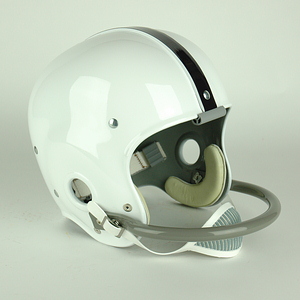
.jpg)
.jpg)
.jpg)

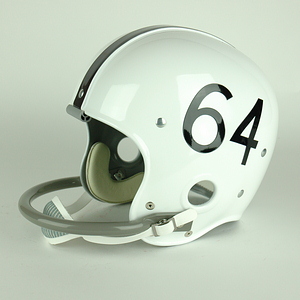
.jpg)
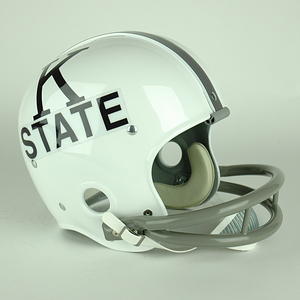

.jpg)
.jpg)
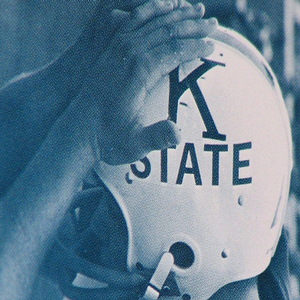
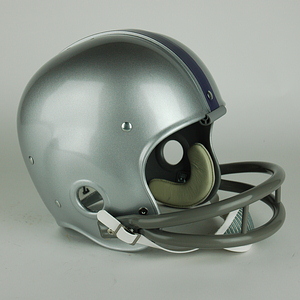

.jpg)
.jpg)
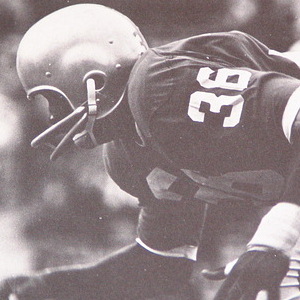
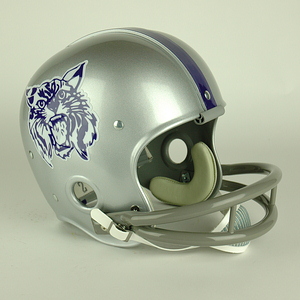
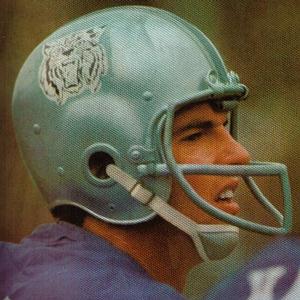
.jpg)
.jpg)

.jpg)
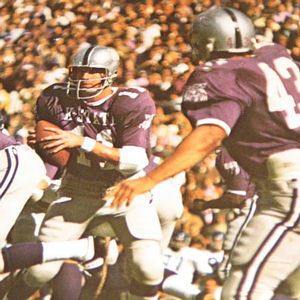
.jpg)
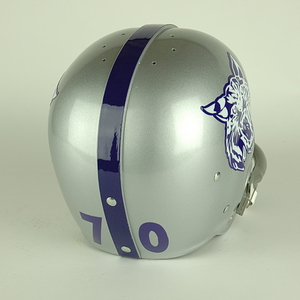

.jpg)
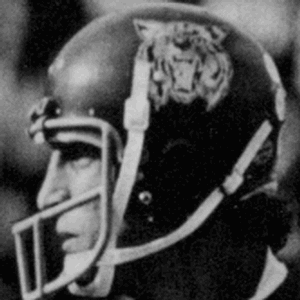
.jpg)
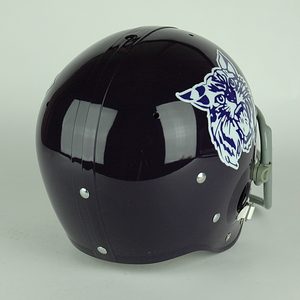

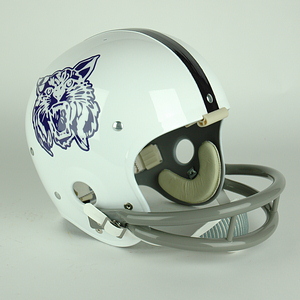
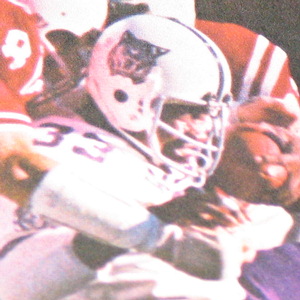
.jpg)
.jpg)
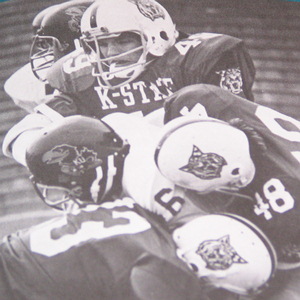
.jpg)
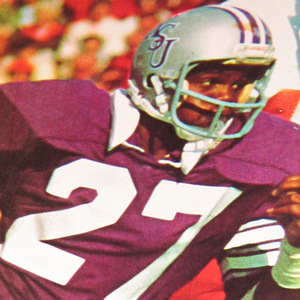
.jpg)
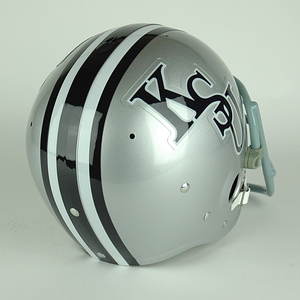

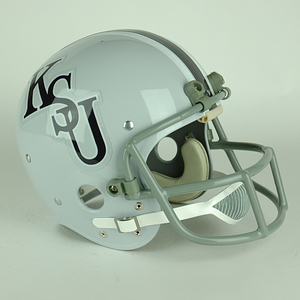

.jpg)
.jpg)
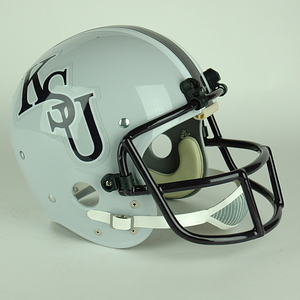
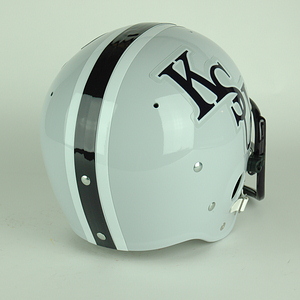
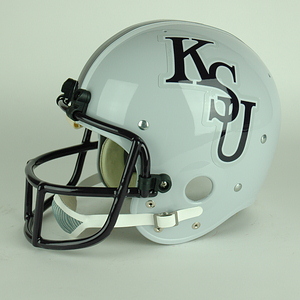
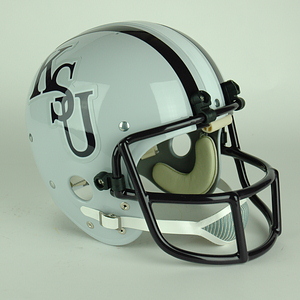

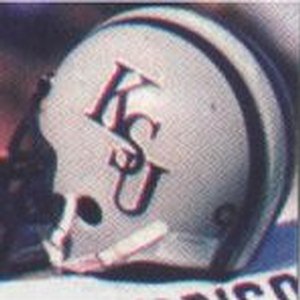
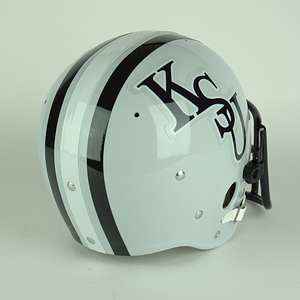
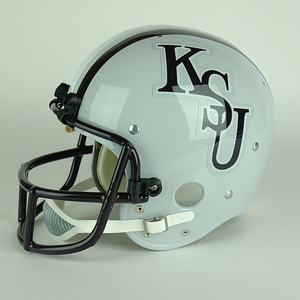
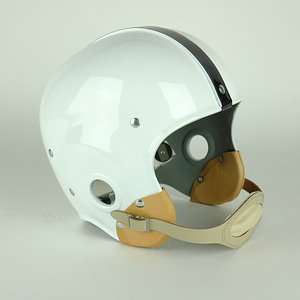

.jpg)
.jpg)